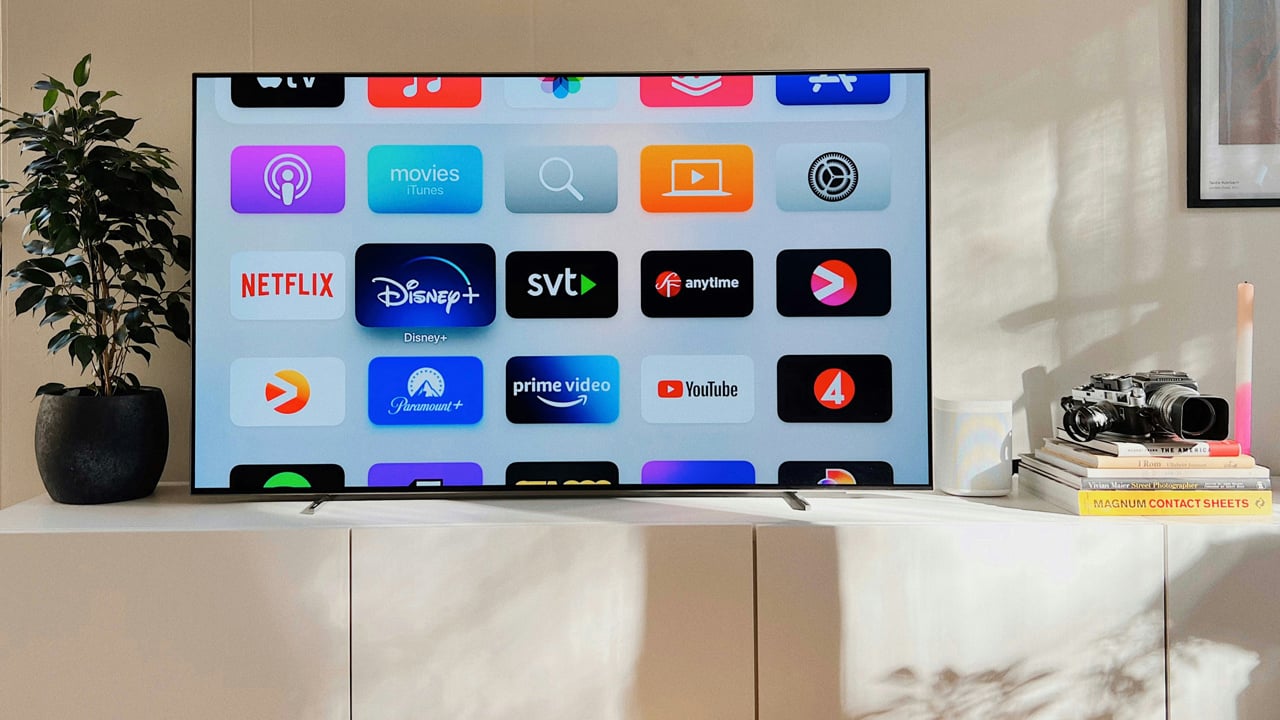A Q&A with Lindsey Wilkes, SVP of Business Development
By Calvin Scharffs
As audiences shift toward streaming, connected TV (CTV) is redefining advertising by combining traditional TV's massive reach with the precision and measurability of digital platforms. For linear TV advertisers, CTV adds granular targeting, real-time measurement, and mid-campaign optimization. Moreover, advertisers can add a performance component to their campaigns by retargeting consumers who’ve seen their ads with follow up promotions on their mobile devices or home computers.
CTV's efficiency has also made TV advertising accessible to brands previously priced out of the market. Programmatic CTV particularly has lowered barriers, letting more advertisers reach audiences at scale while driving measurable results from their media spend.
But with that growth comes challenges, including ensuring premium inventory and avoiding sellers whose offerings may not meet advertisers' expectations. To explore these opportunities, challenges, and the strategies brands can adopt to succeed, I sat down with Lindsey Wilkes, Senior Vice President of Business Development at Orange 142, to dive into the evolving world of CTV.
CS: With CTV anyone can launch TV ad campaigns now. But who will benefit the most from CTV advertising?
LW: The obvious category are the brands that already invest in linear. CTV delivers all of the advantages of linear -- massive reach, high brand recall -- and then some. For instance, advertisers can focus on key audiences they want to reach without wasting ad spend on audiences that won’t convert because they’re not good fits for the product. CTV, as a digital channel, is also measurable, so that brands can optimize their campaigns in mid-flight to drive better results.
Another ideal candidate are the challenger brands or organizations that compete with established names. CTV can help them boost awareness in markets with the large brands dominate, without the expense of a massive linear TV campaign. Moreover, challenger brands tend to be performance driven, which CTV supports, especially when paired with companion mobile or web-based retargeting campaigns.
CS: Can you give me an example?
LW: Sure. Orange 142 works with a lot of higher education institutions in their enrollment marketing campaigns. Smaller colleges that compete with well-known universities in their regions will see tremendous benefits in pairing a CTV campaign to raise their profile, and follow it up with direct mail campaigns that reach the households where the CTV ads were seen.
CS: We tend to think of TV as a channel for raising brand awareness, but what about brands whose budgets are such that driving business outcomes is a must?
LW: That’s another category of brands that I believe can benefit from CTV advertising. CTV is obviously a great way to introduce audiences to a brand, but with the retargeting capabilities built into the ecosystem, CTV is now seen as an ideal channel for performance. When we work with brands, we always encourage them to set goals for specific actions for the audiences to take, which we build into complementary campaigns like display or native ads. So if a retailer opens a new outlet in a DMA, CTV can be used to announce its arrival, and a mobile campaign can offer a discount as a way to drive foot traffic to the store.
CS: What about local or regional advertisers? They tend to focus on local news outlets because they want to limit their targeting to specific areas.
LW: CTV allows for hyperlocal targeting, more so than linear TV. And again, regional and local brands can retarget households that see their CTV campaigns with compelling offers in other digital channels. Once upon a time, these brands -- think local plumbers or auto dealerships -- would pay for TV advertising and hope for the best. Now they can see the results and measure the impact or ROI of their ad spend.
CS: You’ve said that CTV offers improved targeting. How exactly?
LW: CTV allows for precise targeting by IP address, demographics, consumer interests, and genre preferences. Take IP targeting, which is much more specific than broader methods like DMA targeting, which reduces wasted ad spend. Advertisers can also use IP addresses to retarget ads across household devices, for instance, showing a mobile ad to someone who viewed a CTV ad.
What really enhances targeting on CTV is the ability to leverage first-party data from platforms like Amazon and Netflix. These platforms provide rich insights based on user behavior, such as viewing habits or purchase history. So if you’re a CPG brand launching a new organic olive oil, you could target audiences who frequently watch cooking or healthy lifestyle shows on Netflix or purchase similar products on Amazon.
Additionally, some data providers combine hyper-local geo data with census data, enabling advertisers to focus on specific neighborhood characteristics, such as areas with high concentrations of families or young professionals. This level of granularity ensures campaigns reach the most relevant audience possible.
CS: We hear all the time that TV ads are more effective than other ads due to the combination of sight, sound and motion. Are they more effective than other ad units?
LW: Absolutely. CTV ads are incredibly effective because they command attention in ways other digital formats can't. They’re full screen, unskippable, and their completion rates are significantly higher compared to other digital channels.
In fact, numerous brand studies confirm that CTV ads are excellent for building brand recall. Their immersive nature and placement on large, “glass” devices like smart TVs and gaming consoles make a big difference. Think about it: when you're watching on a TV, it’s front and center. The experience is more engaging, and the ad recall is naturally higher than something like a display ad.
CS: Let’s talk about some of the challenges that brands may encounter with the channel. What should they watch out for?
LW: A key issue is cost. The higher CPMs may deter some brands that are focused solely on driving website traffic or performance metrics, and have less concern about awareness. Those brands will benefit from a companion digital campaign that is optimized to their specific KPIs.
I think a bigger challenge is in acquiring premium TV. I can watch a television episode on my cell phone or computer, but if you’re a brand who has paid a premium CPM to show me ads, is that the ad experience you expected? Probably not. So ensuring campaigns target premium CTV platforms -- smart TVs, streaming devices, game consoles -- is a big challenge. And it’s not just the experience. If the CTV impressions you buy are really mobile video in disguise, your completion rates will diminish, and you won’t get the kind of brand recall you need to grow your business.
Another challenge is in targeting. I know I just said that CTV offers really great targeting options, but that’s only in specific scenarios. Open exchanges lack granularity, which limits the advertisers' ability to target specific genres or audiences effectively.
CS: So how does Orange 142 address these challenges?
LW: First let’s talk about the higher costs. We address this by building performance components into campaigns. For example, we pair CTV ads with companion ads that retarget users across their devices. This lets us maximize ROI by driving conversions after an awareness-building CTV ad.
We also ensure campaigns run on high-quality inventory. To avoid low-quality placements or misrepresentation, we curate private marketplace deals and work directly with publishers such as Netflix, Prime Video, and Paramount+. This allows us to guarantee premium inventory on smart TVs, gaming consoles, and streaming platforms, rather than mobile devices or less desirable placements.
Lastly, we avoid the limitations of open exchanges by partnering directly with publishers to target specific genres or audience preferences. This kind of precision ensures that our clients’ ads resonate with the right viewers in the right context. By addressing these challenges strategically, we deliver both strong performance and transparency for our clients.
CS: What’s the one thing you’d want advertisers to take away from this conversation about CTV?
LW: That CTV is more than just a great way to build brand awareness -- it’s an opportunity to connect with audiences in a meaningful, measurable way. Whether you’re a challenger brand looking to get noticed or a large advertiser aiming to maximize efficiency, CTV can deliver results when it’s done right. And the key to getting it right is targeting the right audience, leveraging premium inventory, and ensuring performance through follow-up campaigns.
Want to learn how this can work for you? Orange 142 helps SMBs navigate and maximize emerging advertising channels with strategic guidance and best practices. Let’s connect to explore the right approach for your goals.
About the Orange 142 Emerging Channels Council
The Emerging Channels Council serves as a thought leadership body within Orange 142, focusing on educating, guiding, and encouraging independent brands and agencies to experiment and excel in underutilized and innovative channels. Through collaboration, data-driven insights, and practical resources, the council will help Orange 142 clients obtain strategic growth through sustainable practices in digital advertising.
To access all of the Emerging Channels Council resources, please visit: https://orange142.com/emerging-channels-hub





